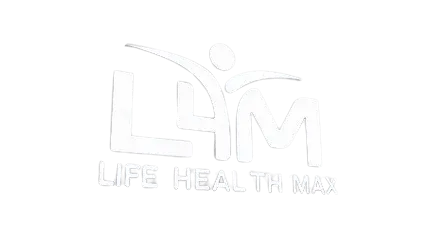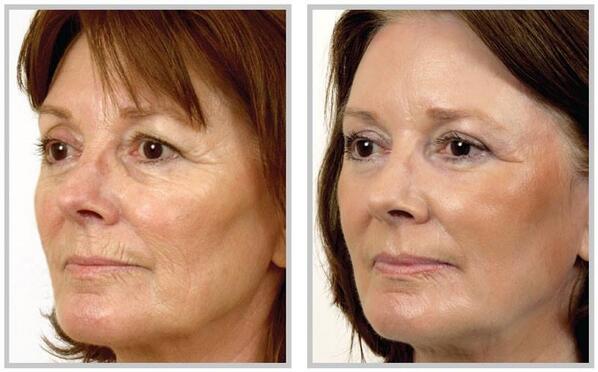Nursing is a profession that employs a wide range of practices and processes to deliver patient care. Many of these are learned as part of formal training through an approved nursing program as well as through practical experience gained in the healthcare sector.
Without a doubt, nursing offers a satisfying career, with a broad scope of daily activities making it appealing to anyone looking for a varied working life in a caring profession.
In this article, we’re going to take a close look at the practices and processes that you will encounter in your day-to-day role as a registered nurse, to help you determine whether this is the career for you. We’ll also explore the routes into nursing and the diverse work settings where registered nurses may practice.

Contents
Nursing processes
Nursing offers a wide-ranging and varied career with plenty of opportunities for professionals to use their skills in their everyday practice. There are certain processes nurses follow which are then implemented into practice. These processes include:
Assessment
Nurses assess their patient’s health status and needs by gathering and analyzing data. They might take their patient’s blood pressure, oxygen saturation and pulse to get a general idea of how they are doing. As nursing is now seen as a holistic profession, they are also likely to assess their emotional status and needs, such as how they respond to pain or communicate with healthcare staff or visiting family members.
Diagnosis
This is the judgment the nurse makes about the patient’s health status, when it’s appropriate to do so and bearing in mind that doctors may make more formal diagnoses of a patient’s condition. Diagnosis can be multi-layered, so the nurse might not only identify that the patient has limited mobility but that this could result in an elevated risk of pressure ulcers or a tendency to become anxious or depressed about their health status. This diagnosis will lay the foundation for the nurse’s care plan.
Outcomes/planning
After the nurse has made their diagnosis based on an assessment of the patient’s status, they can start planning measurable outcomes or goals. For the immobile patient, this could include encouraging the patient to get out of bed several times a day with support, or enlisting the help of a physical therapist to do this. It may also mean setting goals to relieve the pain that’s behind the state of immobility and offering counseling services to the patient to work through any fears or anxieties.
Information from the nurse’s assessment, diagnosis and outcomes is written in the patient’s care plan.
Implementation
This means that nursing care is offered as per the care plan so that it is delivered in a systematic and cohesive way. This implementation is also recorded in the care plan.
Evaluation
This represents the final process in nursing care. The patient’s progress and the nursing care administered should be evaluated on a continuous basis with changes made to the care plan if necessary to achieve the best outcome for the patient.
Nursing practices
The nursing processes described above provide an overarching view of the role of the nurse. As you can see, this role requires a range of skills and the confidence to apply them in diverse situations.
Let’s now drill down and see what the application of nursing processes means in real terms by examining the nursing practices used on an everyday basis:
Assessment
To start with, let’s examine some of the typical practices linked to assessment. Nurses use a variety of methods to assess their patients. Their observations are checks to determine a patient’s state of health and will include practices such as taking their body temperature, respiratory rate, heart rate, pain score and level of alertness. These are generally considered the basic observations and the nurse can get a good picture of their patient’s overall health from these alone.
They may go on to make further observations such as blood pressure, eye pupil size, circulation and blood sugar levels. All these actions help to build a more detailed view of their patient’s health status.
In specialized areas of nursing, such as transplant nursing, assessment may also include more detailed practices, including monitoring for organ rejection or infection. This is a vital step in the transplant process and accurate and timely assessment can make the difference between the success or failure of the transplant.
A vital part of the assessment process is recording any findings accurately and updating the patient’s medical records so that they can receive the best and most appropriate care.
Diagnosis
Next on our list of processes comes diagnosis. Tasks associated with this include making an informed judgment about the patient’s state of health and recording it in the patient’s records. The nurse may advise that additional tests be performed to help them make a diagnosis of the patient’s condition, and as part of this process, they will need to liaise with other staff members and the laboratory to ensure the tests are carried out and recorded, and that the appropriate action is taken as a result.
Outcomes/planning
Once the assessment and diagnosis processes are complete, the nurse must start planning their patient’s care. Like every stage in the patient’s journey, the care plan must be accurately recorded in the patient’s record and communicated to appropriate colleagues.
Tasks linked to the planning process will include setting goals in collaboration with the patient and other staff members involved in their care, and communicating with healthcare professionals who provide additional services. This may include physical therapy for the patient to practice in hospital or at home, occupational therapy, nutrition advice and counseling.
Implementation
When it comes to the implementation of the patient’s care plan, there are many tasks that fall within this category.
One of the key duties will be to administer treatment and medication as per the physician’s orders and detailed in the patient’s plan. This could include assessing, cleaning and dressing wounds, inserting catheters and administering medications. All of these require high levels of confidence and accuracy to ensure the best and safest care for the patient.
Some nurses also have the ability to prescribe medication without a doctor being involved as part of their nurse practitioner role. This requires a high level of education and training and in fact, nurse practitioners perform many of the same duties that a doctor will provide.
As part of their everyday tasks, nurses will also be required to operate medical equipment and tools. These can range from basic stethoscopes and thermometers through to more sophisticated items such as ventilation equipment and intravenous infusion pumps.
Depending on the level of support staff available, nurses may also be required to provide basic personal care, such as helping patients get in and out of bed and use the bathroom. Inevitably, these types of intimate tasks will also require the nurse to gauge the patient’s emotional state and provide support as appropriate.
Accurate paperwork and record keeping is an essential part of any nurse’s day. In addition to recording test results and observations, nurses are also required to keep track of admissions and discharges on their ward and messages and communication from other staff members, family members and visitors.
It goes without saying that a nurse’s role is incredibly varied, requires high levels of accuracy and stamina, and that no two days are the same!
Other nursing practices
There are many more tasks and practices that a nurse will undertake as part of the holistic care of their patient.
These may be linked to one of the processes we’ve discussed earlier or may be appropriate at any stage of the patient journey.
One key role that is present in every aspect of nursing is education. This could involve educating your patients about managing a short-term illness or long-term condition. For example, it could mean advising patients on how to take medication, keep a wound clean or choose a diet that aids in their recovery.
It could also involve training and educating other staff members to use equipment or mentoring student nurses through their practical placements — passing on your knowledge and seeing others thrive is undoubtedly one of the many rewards of a career in nursing.
Advocacy is another skill that is used across many areas of nursing. This means assisting your patients in expressing their wishes, understanding their rights and participating them in their own healthcare. This may mean representing the client’s needs and wishes to other healthcare professionals about their treatment.
Communication with family members is linked to this practice and, again, is an essential skill that nurses will need to use every single day of their working life. This can sometimes involve delivering bad news to a patient’s loved ones, advising them that treatment has come to an end or that their family member has passed away. Clearly, this is a challenging task and nurses can undergo specialized training in breaking bad news.
In fact, communication with all the people you come across in your role as a nurse is at the very core of your practice. As part of your day-to-day work, you will need to communicate clearly and respectfully with colleagues at all levels, sometimes under immense pressure and in difficult circumstances. Again, ongoing training to hone these skills will help you do this successfully.
How do I get into nursing?
If these everyday practices, processes, activities and challenges sound appealing to you, the chances are that you are considering a career in nursing, and you may be wondering how to get there.
To qualify as a nurse in the United States, you must first complete an approved nursing program. This could be a nursing diploma, an Associate Degree in Nursing (ADN) or a Bachelor of Science in Nursing (BSN).
Once you’ve completed your course of study, you will need to pass the National Council Licensure Examination for Registered Nurses (NCLEX-RN) exam. Passing the exam gives you the status of a licensed registered nurse and allows you to practice.
If you are wondering what the difference is between the various types of programs, then be advised that a Bachelor of Science in Nursing is generally considered to offer a more diverse range of skills and, ultimately, more opportunities in the field of nursing.
In fact, in 2011 the Institute of Medicine (IOM) made a recommendation that 80% of registered nurses (RNs) should hold a Bachelor of Science in Nursing by 2020 to ensure that the increased demands for care were met and to meet the needs of a healthcare system that has become increasingly complex.
In 2017, New York State passed a “BSN in 10 Law”. This means that all nurses practicing in the state must obtain a BSN within 10 years of achieving their RN license. That’s because evidence shows that the more educated nurses are, the better the outcomes for patients.
A BSN is open to candidates entering the world of nursing or who may have already achieved their ADN or even have a Bachelor’s degree in a different subject.
For example, if you already have a non-nursing degree but have a desire to move into the nursing profession, an ABSN online program through a reputable institution such as Holy Family University could be the ideal route in for you. Their Second Degree Distance Hybrid BSN (ABSN) is a hybrid, full-time program designed for students who already have a Bachelor’s degree. While teaching and coursework are delivered online, you will also benefit from an on-campus residency and clinical placement services, making this the ideal mix of learning from the comfort of your chosen venue and practical, hands-on instruction.
Not only is it approved by the PA State Board of Nursing and accredited by the Commission on Collegiate Nursing Education, their students have a higher than average pass rate for the NCLEX-RN exam.
This program only takes 14 months to complete, meaning you can progress to your NCLEX-RN exams sooner than you might have thought and begin practicing in your chosen career.
Work settings for registered nurses
In addition to the variety of practices and tasks you will carry out as a nurse, you will also be able to practice in a wide range of settings.
This means that the range of tasks you carry out can vary enormously and that there is plenty of scope for you to find your niche in this rewarding profession.
These settings include:
- Physicians’ offices and clinics
- Hospital wards, including medical and surgical wards
- Mental health settings
- Emergency rooms
- Nursing homes
- Schools and colleges
As you can see, there is a setting to suit every kind of nursing career. If you’re looking for a fast-paced, unpredictable environment, then working in an emergency room could work well for you.
Alternatively, if you enjoy getting to know your patients and supporting them at a vulnerable time in their life, a mental health setting or nursing home might better match your requirements.
Variety is endless when it comes to your nursing career. You will be stimulated and challenged every day thanks to the wide variety of processes and practices you will undertake, and you will be able to take your pick of environments where you can truly put your knowledge and skills to the test.
Nursing – not just a job!
Choosing a career as a nurse means you understand that it’s not just a job — it’s a calling.
With the wide range of processes and practices required, it’s also a rewarding and satisfying career path, with many opportunities to diversify, learn new skills, lead and grow as a professional.
If you’re passionate about nursing, then embarking on your career the right way is crucial. When you choose a Bachelor of Science in Nursing, you’ll have the opportunity to expand and deepen your knowledge of this worthwhile field and enter it with the confidence to give your patients the very best in care.

Carl Clay is a health blog author who has been writing about nutrition, fitness and healthy living for over 10 years. He also loves to run, hike and bike with her wife.












